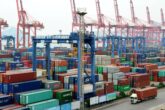May 27, 2016
Dynamic Rebalance: An Alliance Requirements Roadmap
On May 26, 2016, CNAS hosted a rollout event for the Asia-Pacific Security Program’s latest report titled “Dynamic Rebalance: An Alliance Requirements Roadmap.” The authors began by overviewing the topline arguments in the report and then proceeded to address questions posed by the audience.
Dr. Patrick Cronin was the first to introduce the report, highlighting that its origin lay in the questions asked by CNAS Chief Executive Michèle Flournoy more than a year ago: What does the next Secretary of Defense need to prioritize with respect to building allies and partners in the Asia-Pacific Region? Where should we be going? And where can we go? Dr. Cronin noted the Asia-Pacific Security Program took to task and constituted this report as a set of strategic guidelines rather than fixed metrics, recognizing the dynamic aspect of a shifting context—despite the fact that worry over China’s A2/AD capabilities remains constant. Dr. Cronin emphasized the mutually reinforcing relationship of these counter-intervention capabilities and China’s coercive actions in the South China Sea. This is why the report seeks to exploit underexplored contributions our allies and partners can make to promote a successful regional, cross-domain strategy.
Dr. Rapp-Hooper indicated that the report is driven by the analysis of the three most likely flashpoints in the Asia-Pacific region—the East China Sea, the South China Sea, and Taiwan—and the different kinds of escalation that each might include. This is particularly important because the actual ways in which escalation might occur have a tremendous influence on what our allies’ and partners’ requirements will have to be. Dr. Rapp-Hooper went on to describe the likely escalation scenario in each of these flashpoints and further summarized the recommendations made in the report. Finally, Dr. Rapp-Hooper highlighted the contribution of Desmond Walton in the section and made clear the focus shouldn’t necessarily be on highest-end capabilities, but rather on security cooperation, rotational access, and maritime domain awareness.
Through the lens of these escalation scenarios, Mr. Krejsa then lay out a roadmap of specific capabilities that emphasizes the comparative advantage of each of our partners, while recognizing the strategic reality facing each of them and ourselves. Mr. Krejsa clarified our partners’ tactical advantages, and how to best utilize them in countering aggression.
Ultimately, three major themes brought out by the report were highlighted as follows:
- The essentiality of an operational adaptation of US forces who won’t be able to fight the same way as they have in the past.
- The growing importance of information, especially as a counter to interdiction and coercion, as it becomes almost a central element of alliance strategy, whether through a central command with real C4ISR capability, or the infrastructure to obtain information and disperse it widely in real time.
- The holistic “deal-with-China” nature of the strategy: while this report focuses on defense, it is a small part of a peacemaking strategy.
More from CNAS
-
Global Leaders Condemn Pahalgam Terror Attack
In the wake of the Pahalgam terror attacks, global leaders, including Trump and Macron, condemned the violence and expressed solidarity with India. As calls for justice grow, ...
By Lisa Curtis
-
Ziemba: Struck By Energy Deal Between India & Saudi Arabia
Saudi Arabia and India have agreed to deepen energy ties and cooperate more closely on tourism and technology as the countries seek to strengthen relations at a time of turbul...
By Rachel Ziemba
-
Trump’s Crackdown on Foreign Students Is a Gift to China
When top global talent no longer sees America as a stable, long-term bet — in light of both visa and research funding insecurity — many will vote with their feet....
By Jordan Schneider
-
Trump Administration Realises That The Tariff Strategy Has Backfired: Lisa Curtis
Trump administration realises that the tariff strategy has backfired, says Lisa Curtis, senior fellow and program director at the Center for a New American Security.Watch the ...
By Lisa Curtis




